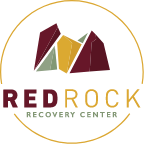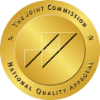But I was responsible for the ways in which I allowed what happened to me to harm myself or other people in my life
But researchers Dusty Miller and Laurie Guidry argue in their book Addictions and Trauma Recovery: Healing the Body, Mind, & Spirit, that many models of addiction recovery don’t take potential trauma into account when offering a solution. And while they don’t discredit 12-step recovery, they suggest that the approach does not sufficiently address the role that trauma has played, which can set people up to fail in their recovery. But it doesn’t have to be that way.
Part of the problem is that many 12-step fellowships do not talk about trauma, focusing strictly on addiction. But for me, my trauma and addiction were intertwined. The more I used, the more I was victimized; the more I was victimized, the more I used. Kristin, a member of Alcoholics Anonymous (AA), says that trauma is something people are embarrassed to talk about, even in women’s meetings. If it’s hardly talked about in women’s meetings, it’s talked about even less in men’s meetings, according to Robert, who worked the steps as a way to cope with having several addicts in his family.
On a path to 12-step recovery, a person will eventually get to the 4th Step. In most 12-step programs, this step reads, “Made a searching and fearless moral inventory of ourselves.” In AA’s Big Book, it explains, “we searched out the flaws in our makeup which caused our failure,” and became convinced that “self, manifested in various ways, was what had failed us.” The number one manifestation of self that the book identifies as causing alcoholics’ problems is resentment. For people who have been abused in their life, it makes sense that they would harbor resentment towards the perpetrator of that abuse. And the way the program’s language is interpreted can make all the difference when it comes to helping a trauma survivor heal from their trauma and recover from their addiction.
“Finding Your Part”
In the Big Book, the 4th Step offers these instructions for the resentment portion of the moral inventory: “Putting out of our minds the wrongs that others had done, we resolutely looked for our own mistakes… though a situation may not have been entirely our fault, we tried to disregard the other person entirely. Where were we to blame?” This is sometimes known as the “4th column” of resentment inventory, or “turnarounds.”
This kind of language can be challenging for people who have experienced trauma likechildhood sexual abuse, sexual assault, or domestic violence. In many cases of childhood sexual abuse or domestic violence, survivors are already likely to blame themselves for their abuse. Many of them have been told by their abusers that they were responsible for what happened to them. It also echoes much of the victim-blaming language sexual assault survivors receive from society about their own fault in their attacks. Rae, an AA member, was in an abusive marriage when she entered the halls. She says that she thought the abuse was her fault, because she was getting that message from both her abuser and the program itself. “So for a long time, I was scared to tell anyone in the program, and I kept trying to fix it,” she says.
Jamie Marich, Ph.D. writes in her book Trauma and the Twelve Steps: A Complete Guide To Enhancing Recovery, that individuals with trauma histories ”often find it difficult to address the past and take appropriate responsibility for their actions, while not being overwhelmed by the shame-based ideologies they acquired as part of their trauma.” When Kristin went through the 4th step with her first sponsor, she says her sponsor told her that she had to take responsibility for everything, because she was the one that drank and used and therefore put herself in situations where she was sexually assaulted. Kristin says that she’d already blamed herself for those experiences, and the 4th step ultimately solidified her feelings of guilt. Kristin says, “Instead of making me feel better, after the 4th step I still felt like a horrible person.”
For other people, the fear that they will have to take blame for their abuse is enough to prevent them from being able to complete the step. It was what I was afraid would happen when I first received my 4th step instructions, and what Nicole, a survivor of childhood sexual abuse, says ultimately caused her to leave AA. She says, “I never blamed myself, but I interpreted the step to mean that I had to find some blame,” which was something she says she wasn’t willing to do.
Other language common to the turnarounds of the resentment inventory is that the person doing a 4th step needs to “find their part” in the resentment. For Robert, who considers himself a secondary trauma survivor because there was sexual abuse happening in his house when he was a child and he knew about it, he asks, “How do you take ownership over something that you were legitimately a victim of? The language is definitely problematic.”
Nicole says that being told to “find her part” in her abuse is what upset her most. Her abuser, her father, was an AA member, too. And she felt that finding her part “was giving in to what everyone was saying about me, and it would be used as evidence of my own guilt [in the eyes of my family].” Kristin says that, even three years sober, she still blames herself for her sexual assaults and that, as a result, she has been unable to get past her self-hatred. She believes taking full responsibility for her trauma has had negative impacts on her relationships, too. “I came to AA for support, and to hear that I don’t have to take responsibility for what happened to me. Instead it’s been the other way around,” she says.
Another place that 4th step may trip up trauma survivors is with the idea that, ultimately, writing down your resentments and finding your part in them will allow you to let them go. Nicole says that when she got to AA, she had a lot of anger and resentment towards her abuser, but she’d never had anyone validate that anger. Anger is a normal response to abuse. Nicole says, “No one said that it was okay to be angry about it. When I got to the 4th step, it definitely felt like institutional validation of what [my family was saying],” which was that she should just let go of everything that had happened.
Using The Steps To Heal
But, as Stephanie Covington, Ph.D.’s book A Woman’s Way Through The Twelve Steps,points out, by erasing the wrongs of other people completely from our minds, we fail to take into account the fact that our behavior is often in response to our environment. Covington writes that our character defects “don’t form in a vacuum.” They develop as a result of real or perceived threats to our physical or emotional well-being.
Taken this way, Covington writes, “If in our inventories we realize we’ve been manipulative, timid, vain, or defiant, we can ask ourselves, ‘What other options did I have? Could I really have done better given the circumstances?’” Rae says that since leaving her abusive marriage, she’s written another 4th step while working with a new sponsor, which has allowed her to let go of a lot of her resentment. She says, “I can recognize that it wasn’t all my fault. I also see now that being a victim doesn’t make you a weak person.”
That balance and nuance is key to the resentment inventory. Robert says that even though he hadn’t talked to his abusive brother in almost 10 years when he sat down to write his 4th step, his brother was still the first person on his resentment list. He says that what the 4th step allowed him to realize was that “whether my brother was around or not, I was the one that was being affected by my rage. I wasn’t directing it at him—he didn’t even know about it.”
AA’s literature supports this interpretation. In the AA text Twelve Steps and Twelve Traditions, it says, “We had to see that when we harbored grudges… we were really beating ourselves with the club of anger we had intended to use on others.” Ultimately, that lens can provide a productive way for trauma survivors to look at their resentment towards their abusers.
Nicole has begun working the steps in Adult Children of Alcoholics (ACOA), which she is finding helpful because she says it validates the family dynamics that were at play in her home as well as addressing her substance use. She explains that now she can see that it’s not that you shouldn’t be angry or that you should let go of the anger for the other person, but you should let go of anger because it’s not serving you. This way of addressing resentment doesn’t invalidate the completely understandable feelings of anger a survivor might have towards their abuser.
Robert says that, through the help of his sponsor, he was able to see that it wasn’t the abuse that he needed to accept responsibility for; it was his own anger. He says, “I was seeing my anger, not as unjustified, but that this anger that I was feeling was hurting me just as much as the trauma had hurt me.” He says he no longer carries the rage he once felt. “The 4th step completely eliminated that for me.”
Similarly, my sponsor explained to me that I wasn’t responsible for someone else’s decision to sexually assault me, regardless of how much I’d had to drink that night. But I was responsible for the ways in which I allowed what happened to me to harm myself or other people in my life—whether that was because I used my trauma as an excuse to drink, or because I used my status as a victim to get other people to feel bad for me.
Everyone I spoke to agreed that sponsorship can make all the difference in the world when it comes to working through the 4th step in a trauma-informed way. Marich notes in her book that survivors need “proper guidance to do this step in a sensitive way.” When that happens, the 4th step has the potential to be incredibly healing. Rae says she’s been able to let go of her negativity and self-pity around her abuse since working with a new sponsor.
But she warns that working with someone who doesn’t understand trauma has the potential to be dangerous, like in her case. She notes that there were several times that she didn’t call the police during abusive incidents with her ex-husband because she had internalized the message that the abuse was her fault from the program. For Kristin, her first sponsor’s insistence that she blame herself for her assaults has had a lasting impact on her. Kristin would like to see more people in 12-step programs openly talking about trauma and the ways they worked through their moral inventory without blaming themselves. She believes that not talking about it makes it hard to combat harmful program messages. “It’s had such a negative effect on me, and I don’t want other women to have to go through it,” she says.
Robert credits his 4th step inventory with “a miracle.” He says he was recently able to see his abuser and not have any anger towards him. Robert found the ability to feel safe around his brother, when in the past the mere mention of his name would cause him to have an anxiety attack. He says, “That speaks louder than almost any other aspect of my recovery.”
Original Article re-printed here with permission from TheFix.com
Red Rock Recovery Center is a Colorado state licensed substance abuse extended care treatment program designed to help you or your loved one recover from the struggles associated with alcoholism and drug addiction. Located in Denver, Colorado we offer a safe haven for those afflicted by the ravages of untreated addiction. Our program is based on a compassionate 12-step model that applies behavioral as well as life skill therapies, which will enable our clients to heal and recover.
#recovery #drugrehab #redrockrecovery




